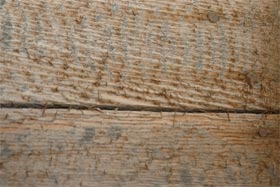Resene Popular Paint Systems –
Exterior and interior woodcare© (stains and clear finishes): training notes
This web page is an edited version of the Resene Best System Selling training notes provided to Resene staff and is provided to enable you to gain a greater understanding of the substrates and paint systems you may encounter in your decorating project. It is impossible to cover all decorating scenarios in a single document, so if you are in doubt about any aspect of your project please contact Resene for assistance.
Select the substrate or area you will be staining or oiling from the list below to view how to prepare and finish the surface.
Preparation & finishing flowcharts
Note: Refer to the PDF flowchart for a visual of the steps below:
Treat moss and mould with Resene Moss & Mould Killer.
Thoroughly scrub with Resene Timber and Deck Wash. Use a short bristled scrubbing brush. Rinse thoroughly.
Finish options:
Note: Refer to the PDF flowchart for a visual of the steps below:
Treat moss and mould with Resene Moss & Mould Killer.
Thoroughly scrub with Resene Timber and Deck Wash. Use a short bristled scrubbing brush. Rinse thoroughly.
Finish options:

Mould and occasionally moss will be present on both unstained and previously stained but weathered timber and will need to be killed using Resene Moss & Mould Killer. The residue and other contaminants will need to be scrubbed and washed from the surface using Resene Timber and Deck Wash or Resene Paint Prep and Housewash.

Deck waterblasted
Do not waterblast – not only is it likely to be slower and less effective than scrubbing using Resene Timber and Deck Wash it can gouge and badly damage the timber, especially soft woods such as Cedar. Waterblasting can be useful for removing coatings including old clear finishes from hardwoods or for cleaning Kwila decking. The adjoining photo shows the damage a waterblaster has caused these Cedar boards. Compare this to similar boards cleaned using Resene Timber and Deck Wash on page 3.
In most cases older, well weathered penetrating stains simply need treating for moss and mould followed by thorough scrubbing before applying further coats. If the surface is badly deteriorated it should be sanded with 100-150 grit garnet sandpaper to remove the worst detritus.
If the stain is peeling and/or flaking it is likely to be a surface forming stain and unfortunately this will probably need to be removed before applying a penetrating stain like Resene Woodsman. If it is in sound condition a further coat of the same can be used – however we do not sell (or recommend) surface forming stains.
It is not possible to lighten a stain (unless you remove the previous coating or paint) so subsequent coats need to be either the same colour or darker. Always try a sample or do a test patch when changing the stain colour.
Dark stains are also recommended to help disguise discoloured areas common in aged, weathered timber – particularly Cedar. However there is the increased likelihood that the darker colour will cause some timber movement (warping, cupping etc). Use a Resene Cool Colour option if available – this will help but will not completely stop heat related stress on timber.
Resene Waterborne Woodsman is very tolerant of poorly prepared and weathered timber, which is why we recommend it for old Cedar in particular.